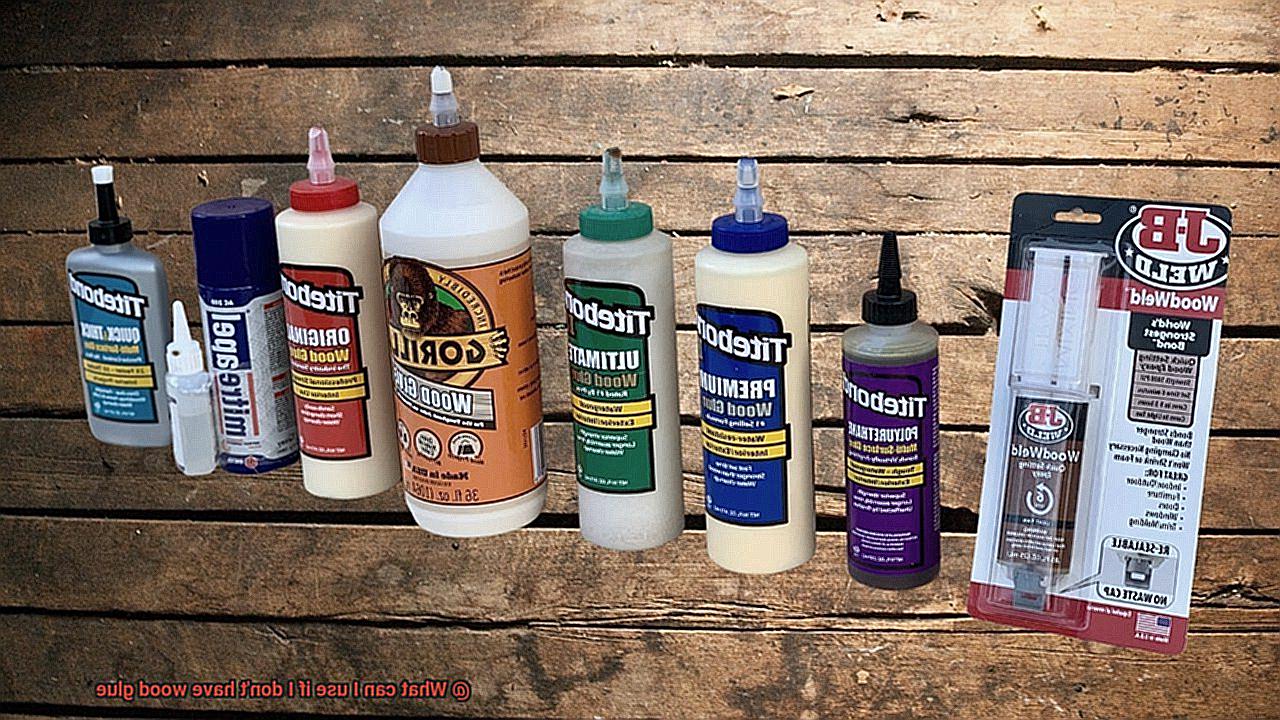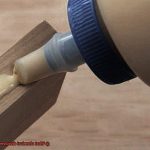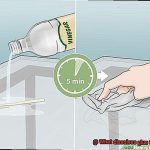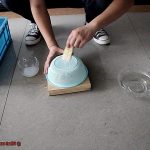Are you in the middle of a woodworking project and suddenly realize you don’t have any wood glue? Don’t fret, because there are plenty of alternatives that can do the job just as well. In fact, some alternatives may even be better suited for your specific project needs.
Wood glue is an essential adhesive used in woodworking to create a strong bond between wood fibers. But what if you don’t have any at hand? Fear not, because we’ve got you covered. In this blog post, we’ll explore various DIY solutions that can serve as substitutes for wood glue.
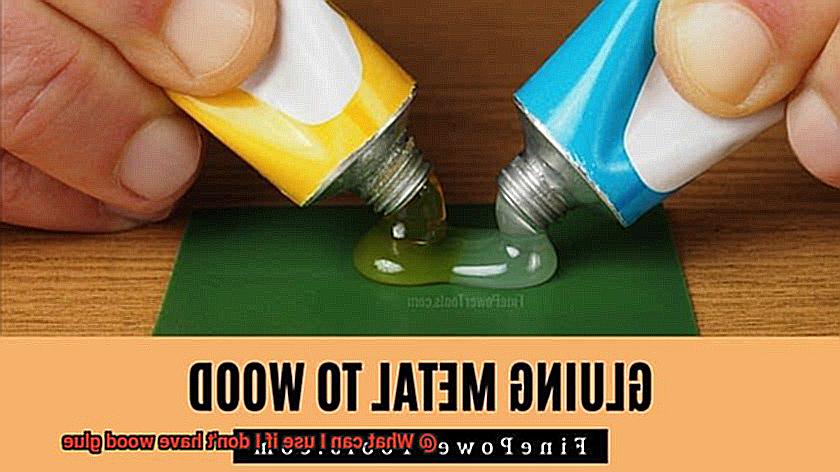
From flour paste to white glue and even milk and vinegar, we’ll delve into how to concoct these alternatives using everyday household items. You might be surprised at just how effective some of these solutions can be.
It’s also important to note that sometimes wood glue may not be the best option for your project. That’s why having knowledge about alternative options is crucial. This blog post will equip you with all the information you need to broaden your knowledge on different types of adhesives.
So sit back, relax and get ready to learn about the different alternatives to wood glue that will make sure your woodworking projects are always a success.
What is Wood Glue?
Contents
It’s an adhesive that is specifically designed to bond wood together and create a strong and durable hold. But what exactly is wood glue made of?
Typically, wood glue is made from a combination of natural and synthetic materials, including resin, water, and additives. The resin used in wood glue is often derived from plants such as pine or soybeans, while the additives help to modify the properties of the glue, such as its viscosity, drying time, and color.
When applied to wood, wood glue penetrates the surface fibers and forms a strong bond as it dries and hardens. The bond created by wood glue is often even stronger than the wood itself, making it an essential tool for any woodworking project where strength and durability are needed.
There are several different types of wood glue available on the market, each with its own unique properties and uses. PVA (polyvinyl acetate) glue is a popular option that is often used for general woodworking projects. Epoxy glue is another type of wood glue that creates a very strong bond and is resistant to water and heat. Hide glue and cyanoacrylate glue (also known as super glue) are other options that have been used for centuries in woodworking.
But what if you don’t have access to wood glue or run out in the middle of a project? Don’t worry. There are several alternative options that you can use. PVA glue, epoxy resin, cyanoacrylate glue, and natural adhesives such as hide glue can all be used in a pinch.
Alternatives to Wood Glue
Luckily, there are several alternatives that can be just as effective and get the job done.
One alternative is epoxy glue, which consists of a resin and a hardener that, when combined, create a durable and robust bond. Although it takes longer to cure than wood glue, the end result is stronger and can be sanded and painted once it dries.
Superglue is another option that forms an instant bond when two surfaces are pressed together. While it may not be ideal for larger woodworking projects, it is useful for small repairs and fixes.
For those who prefer natural options, animal hide glue has been used for centuries and is made from animal collagen. Hide glue provides a strong bond that can be easily sanded and painted once it dries. However, this type of adhesive requires heat to activate and can be messy to work with.
Lastly, polyurethane glue, also known as Gorilla Glue, is another alternative to wood glue. This type of adhesive creates a strong bond that expands as it dries to fill any gaps in the wood. However, it can be challenging to remove if any excess glue gets on your project, so it’s important to work carefully when using this type of adhesive.
PVA Glue
While wood glue is typically the go-to choice in most situations, there may be times when you need to explore alternative options. Enter PVA glue, also known as white glue or school glue.
This water-based adhesive is a popular substitute for wood glue due to its ease of use and clean-up properties. PVA glue dries clear and is commonly used for paper crafts and woodworking projects that don’t require a particularly strong bond. However, it’s important to keep in mind that PVA glue is not as strong as wood glue and may not hold up well under heavy stress or weight.
If you’re considering using PVA glue as a substitute for wood glue, be sure to apply it generously to both surfaces you want to bond together. Then, clamp the pieces together firmly until the glue dries completely. To reinforce the joint, consider using another type of adhesive like screws or nails when using PVA glue for a woodworking project.
Before using PVA glue as a substitute, think about the specific strength and durability needs of your project. If your creation will be exposed to moisture, it’s best to use a waterproof PVA glue. For projects that require a stronger bond, opt for traditional wood glue instead.
Epoxy Resin
This two-part adhesive is a versatile and powerful alternative that will take your crafting to the next level.
One of the biggest benefits of epoxy resin is its ability to bond a wide variety of materials – from wood to metal to plastic. This makes it an excellent choice for projects that require a strong and durable bond between different materials. Plus, its waterproof and heat-resistant properties make it perfect for outdoor projects or those exposed to high temperatures.
Using epoxy resin may seem daunting at first, but with some experience and caution, anyone can achieve great results. Simply mix the resin and hardener together in equal parts using a mixing cup and stirring stick. Apply the mixture to one surface and press the two surfaces together. Then sit back and let the epoxy cure over time, creating an unbreakable bond.
It’s important to note that working with epoxy resin can be messy and has a strong odor, so be sure to use it in a well-ventilated area and with proper safety equipment. But don’t let that discourage you – once you’ve mastered the art of using epoxy resin, you’ll never go back to wood glue again.
Cyanoacrylate Glue (Superglue)
In the world of woodworking, sometimes a project requires a quick and easy fix. Enter cyanoacrylate glue, also known as superglue – a fast-drying adhesive that creates a strong bond between surfaces. It’s an increasingly popular alternative to traditional wood glue due to its versatility and efficiency.
While this glue works well on various materials like metal, plastic, and ceramics, it may not be ideal for projects that require significant stress or strain on the joint. So, it’s important to assess the requirements of your project before choosing this adhesive.
One of the benefits of cyanoacrylate glue is its clear drying feature, making it perfect for projects where appearance is key. But be careful when applying it – excess glue can be challenging to remove from skin or other surfaces.
To use cyanoacrylate glue as a substitute for wood glue, start by cleaning and drying the surfaces you’ll be bonding together. Apply a small amount of the glue to one surface, press firmly together with the other surface, and hold for several seconds while the glue sets.
Natural Adhesives
As a woodworking expert, I can tell you that these adhesives are made from natural ingredients and can be a great option for quick fixes or for those who want to use sustainable materials.
Animal glue is a popular natural adhesive that has been used for centuries. This type of glue is made from animal collagen found in animal bones, hooves, and hides. It’s known for its strong bonding properties and is water-soluble, making it easy to remove if needed.
Egg white glue is another natural adhesive that’s perfect for delicate projects. It’s made from egg whites, which contain protein that can be used as a natural adhesive. This type of glue dries clear and doesn’t leave any residue, making it ideal for projects where appearance is key.
If you’re working on a paper project, milk glue might be the perfect solution for you. This adhesive is made from milk’s casein protein and dries quickly, so you can get back to crafting in no time. It can also be easily painted over, giving you more creative control.
Plant-based glues are another option for those looking for eco-friendly adhesives. Starch, flour, and tree sap are just a few examples of plant-based materials that can be used to create strong and durable adhesives. These types of glues are commonly used in woodworking because of their strength and durability.
It’s important to note that while natural adhesives may not have the same strength or durability as wood glue, they are still a great option. Plus, they allow you to use eco-friendly materials in your project and give you more creative control.
CqctN68a46o” >
Also Read: How do you attach wood to concrete without drilling?
Conclusion
To sum it up, running short on wood glue while in the middle of a woodworking project can be exasperating. However, there’s no need to panic as there are plenty of alternatives that can work just as well or even better depending on your specific project requirements. You can choose from natural adhesives like animal hide glue and egg white glue or synthetic options such as epoxy resin and cyanoacrylate glue (superglue). These DIY solutions can easily be concocted using everyday household items.
It’s crucial to keep in mind that sometimes wood glue may not be the ideal option for your project. That’s why having knowledge about alternative options is essential. Each type of adhesive has its unique properties and uses, so it’s vital to assess your project requirements before selecting an alternative.
Whether you’re opting for PVA glue as a substitute for wood glue or exploring natural adhesives like milk glue or plant-based glues, these alternatives are highly effective and will get the job done. Therefore, if you run out of wood glue, don’t worry.

